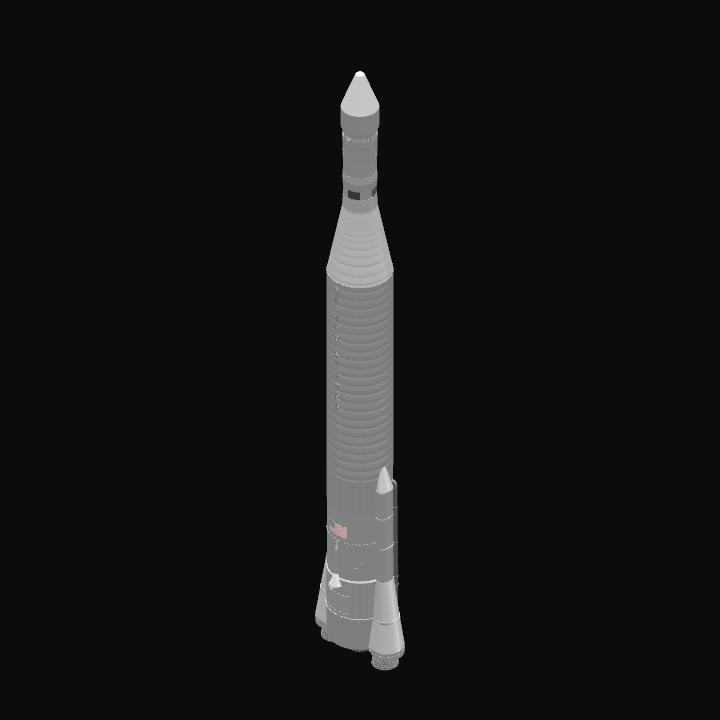
Many early American intelligence spacecraft, for instance, remained attached to their Agena upper stage throughout their operational life. Some upper stages remain attached to their payload and provide services long after reaching their initial orbit. Often, upper stage engines can be restarted several times while in space. Upper stages propel payloads on interplanetary trajectories, or into orbits higher than could otherwise be reached using a rocket booster. Nation: USA.Illustration showing several upper stages. Attempts to relay television pictures of the moon and to bounce radar signals off the moon at close range were unsuccessful. Of four scientific experiments only one was partially completed: gamma-ray readings of the lunar surface.

Some useful data were obtained from the flight. Reversed command signals caused the telemetry antenna to lose earth acquisition, and mid-course correction was not possible. A malfunction in the booster guidance system resulted in excessive spacecraft speed. Lunar impact probe missed the moon by 36,874 km and went into solar orbit. Unfortunately this ruined the film, preventing the Russians from developing it and discovering the technical capabilities of the system.įAILURE: Agena B second stage guidance system failure. The capsule was found by tractor drivers, who disassembled it and used the film to wrap around the frame of their outhouse to provide some privacy in the treeless area. Also recovered were a pear-shaped module made of fibreglass, and an inertial orientation system powered by electric motors. It was equipped with a 30 cm lens and 100's of metres of 10 cm wide film. He relates that a second American capsule was recovered in the spring of 1961. In his memoirs Sergei Khrushchev recounts recovery of what he believed to be a recoverable Samos, except the date given is the winter before tests of this configuration actually started. Reached orbit but failed to deorbit and be recovered. Period: 89.40 min.įirst generation photo surveillance return of camera and film by capsule SAMOS type satellite. First generation photo surveillance return of camera and film by capsule SAMOS type satellite. The orbit decayed and the spacecraft reentered Earth's atmosphere on 20 November 1961. The spacecraft was launched into a low earth parking orbit, but an inoperative roll gyro prevented Agena restart resulting in Ranger 2 being stranded in low earth orbit. This was a flight test of the Ranger spacecraft system designed for future lunar and interplanetary missions. Period: 165.51 min.įAILURE: Agena B Second Stage failed to restart. First generation photo surveillance radio relay of images. Ranger 1's primary mission was to test the performance of those functions and parts that are necessary for carrying out subsequent lunar and planetary missions using essentially the same spacecraft design.įAILURE: Exploded on launch pad. Ranger 1 reentered on August 29 after 111 orbits. Although the spacecraft systems were tested successfully, only part of the eight project experiments could be carried out. The 306 kg spacecraft did not attain the scheduled extremely elongated orbit because of the misfiring of the Agena B rocket. Ranger 1, a test version of the spacecraft which would attempt an unmanned crash landing on the moon, was launched from the Atlantic Missile Range by an Atlas-Agena B booster. Missile Defense Alarm System.įAILURE: Agena B second stage failure. This vehicle achieved a record 1,850-mile orbit and was the heaviest U.S. MIDAS III (Missile Defense Alarm System) satellite was launched into polar orbit from Vandenberg AFB by the first Atlas D/Agena B booster (97D/#1201). Status: Out of Production.Īgena D stages in process, Hangar E, Cape Canaveral

Atlas D with improved, enlarged Agena upper stage. Home - Search - Browse - Alphabetic Index: 0- 1- 2- 3- 4- 5- 6- 7- 8- 9Ī- B- C- D- E- F- G- H- I- J- K- L- M- N- O- P- Q- R- S- T- U- V- W- X- Y- ZĬredit: © Thomas Kladiva - Thomas KladivaĪmerican orbital launch vehicle.


 0 kommentar(er)
0 kommentar(er)
